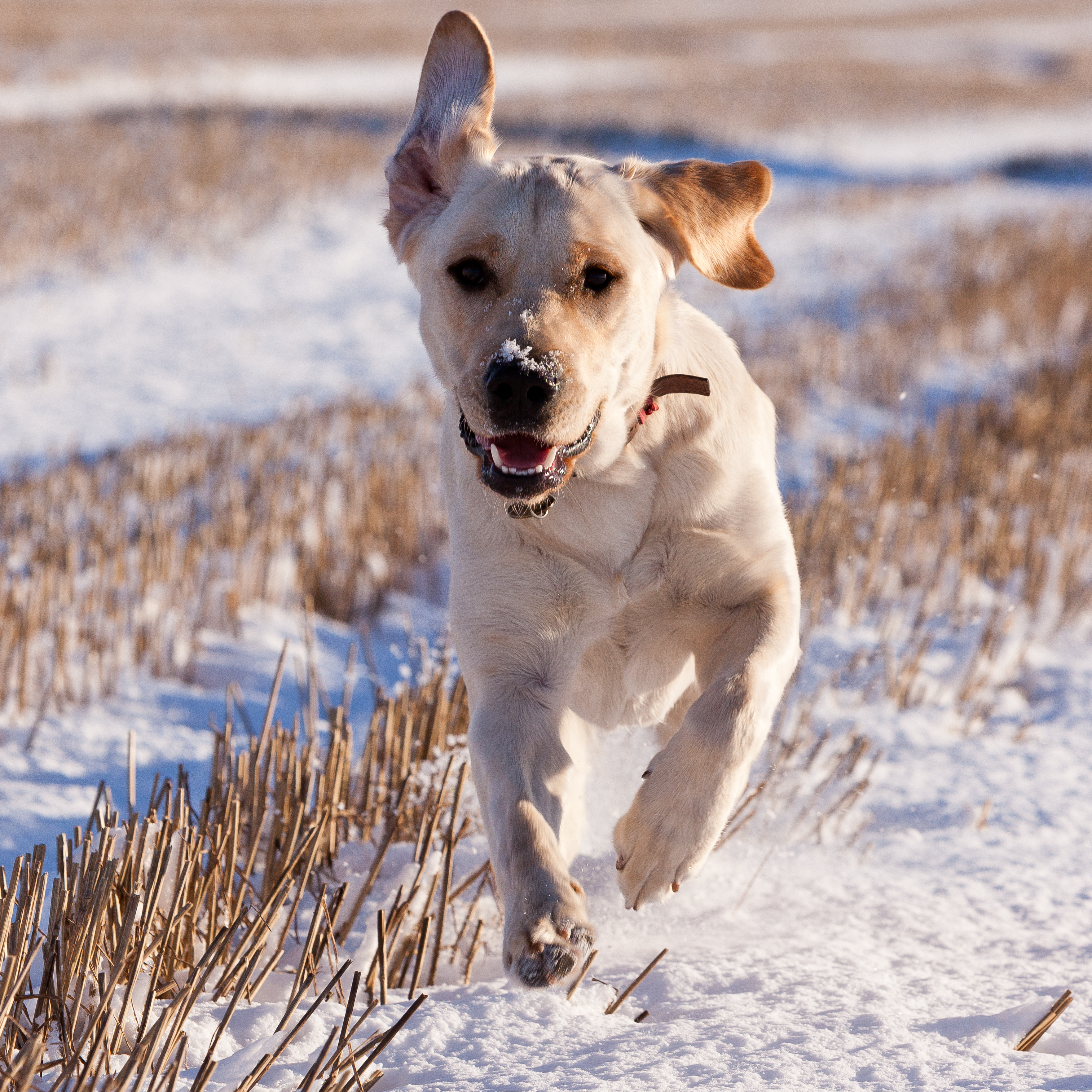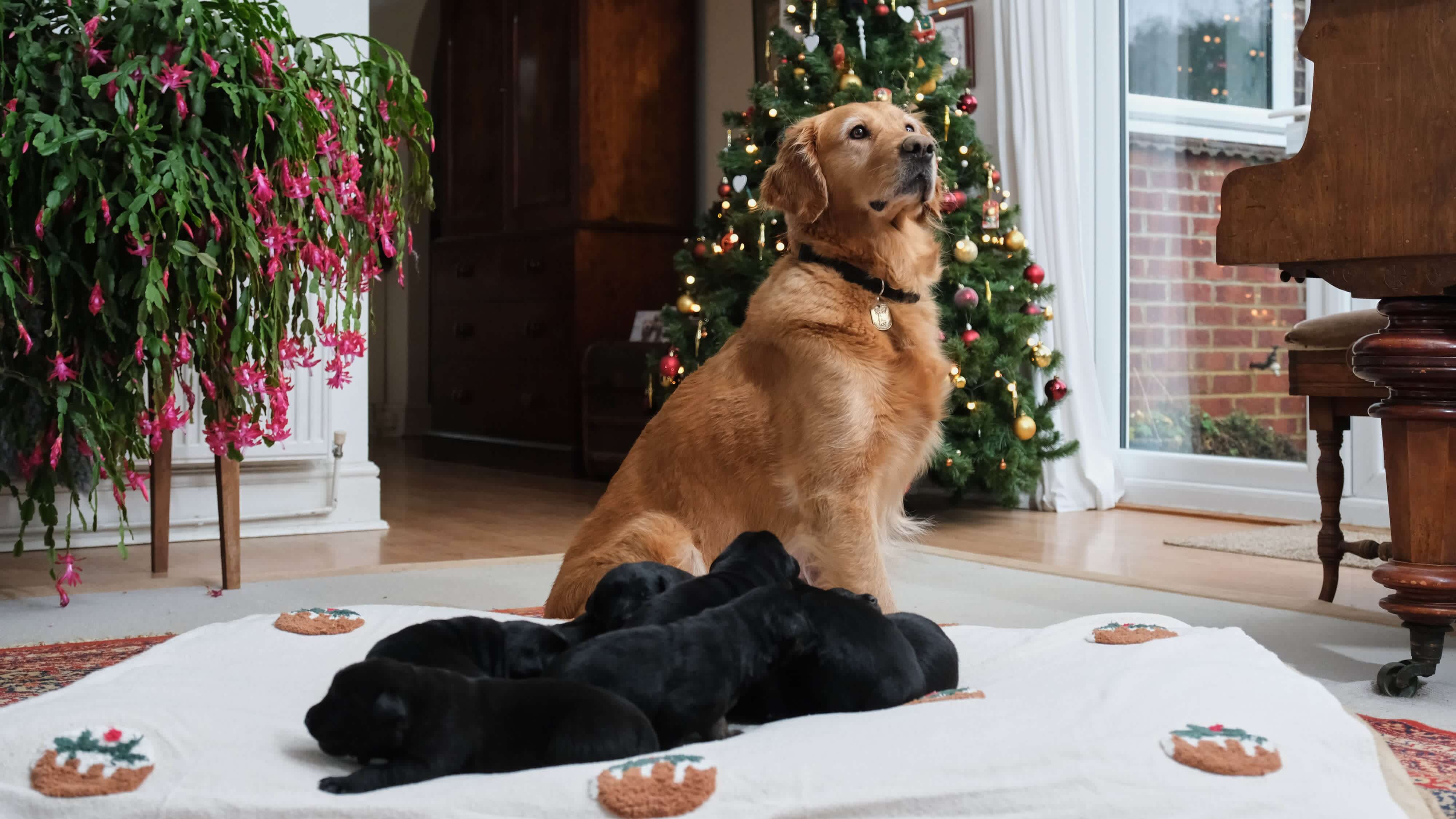What temperature ranges and conditions are cause for concern for dogs?
How this winter's temperature and weather affects your dog really comes down to your dog’s breed, age and condition. Older, smaller and short-coated dogs will struggle much more in this freezing weather than their younger, fitter and fluffier counterparts. The key is to recognise what is comfortable for your individual pets and pay close attention to their behaviour when the weather become more extreme.
Any advice about their paws?
Winter weather can be harsh for paws. The cold dry air and gritted pavements can cause soreness and irritation, so you can protect them with special pet-friendly moisturisers or balms, or even something basic like Vaseline. Always rise paws when you come in from a walk to get rid of any salt. Poisonous anti-freeze is around this time of year as well and may be on pavements, and you do not want your dog licking that from their paws post-walk.
Snow can be an issue for dog paws, as it can cling to fur between the paw pads and be very uncomfortable. If you have a long-haired breed, keeping paws trimmed will help stop this happening. If you do have chunks of snow or ice clinging to your dog’s coat, don’t pull it off as this can be very painful. Use some tepid water to melt it away instead.

What about keeping them warm with a dog coat?
How your dog copes in colder weather is very dependant on breed. Larger, hairier dogs that are suited for snowy conditions, such as huskies, are very unlikely to ever need any additional insulation. Finer coated dogs or dogs than are very lean, such as greyhounds or vizslas, will love layers in the winter, even both a fleece and a coat. Smaller or older dogs are more likely to feel the cold too. Make sure your dog’s coat is well-fitted and doesn’t restrict movement.
At Guide Dogs, our Labradors and golden retrievers don’t tend to wear coats, but some owners like to protect them from the rain when out and about.
Should owners take extra care if walking by frozen rivers and ponds?
Bodies of water can be perilous at this time of year. Dogs – and people! - should never be allowed to walk over frozen rivers or ponds, as they could easily fall through the ice and quickly become hypothermic. Consider keeping your dog on lead to keep them safe.
What other things should be people think about?
Look out for signs of hypothermia, which include shivering, lethargy, slow heart rate, stiffness and pale gums. Wrap your dog up and seek veterinary help immediately if you notice these signs. Thankfully I have never seen a case of dog frostbite in my decades as a vet, as it rarely gets cold enough in the UK for that.
If you are out and about, keep moving to keep warm. It’s not fair on your dog for them to wait and get chilly while you chat to someone on the street for ten minutes. Don’t leave them in the car either, as this won’t protect them from the cold for long.
And stay visible at this time of year. It’s dark for so much of the day and something like a light up collar or reflective coat can make you stand out to drivers and cyclists.
There's more tips and advice for caring for dogs in the cold on the Guide Dogs website here.


